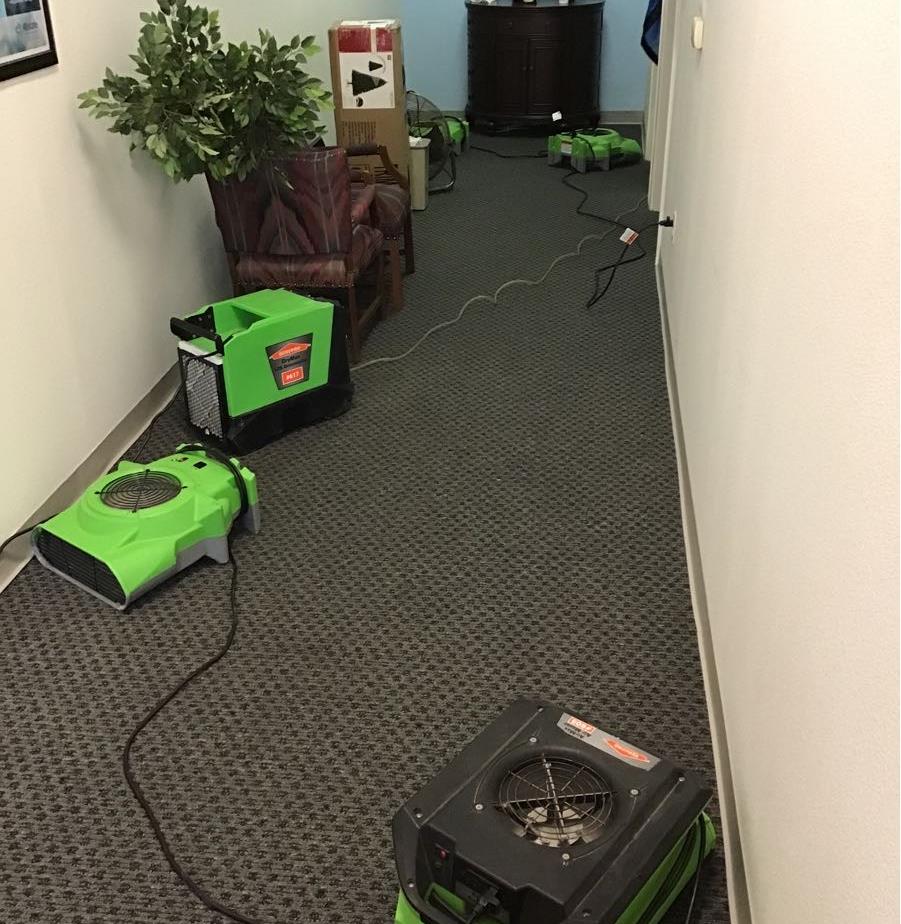What Kinds of Services Qualify as Water Mitigation When My San Antonio Business Suffers Damage?
5/13/2022 (Permalink)
SERVPRO's Water Mitigation Efforts Prevent Further Damage Inside Your San Antonio Commercial Building
When you hear the word "mitigation" in reference to water damage, remember that the purpose of this initial phase of a water emergency recovery is somewhat like holding up a stop sign. Stop! San Antonio. As our crew steps in faster and more efficiently, we put a halt to progressive water loss. We can then quickly and thoroughly move on to remediation, which comprises the range of work our crews perform to try to undo or erase the effects of the water damage.
Can There Be a "Pause" Phase Before Mitigation Efforts Begin?
When our team arrives at your place of business and water mitigation interventions begin as soon as we complete a basic safety inspection. We institute adaptations, ensuring that occupants and mitigation technicians can perform duties without the risk of injury or other concern for well-being. This pause before commencing mitigation activities is always necessary but is perhaps most critical when your commercial building has sustained interior or exterior damage threatening the integrity of the structure. There is also the time during this preliminary chapter for you and our crew chief to discuss the direction we recommend the overall project should take.
What Actions Do We Take During the "Pause?"
- We secure the damaged or wet areas with:
- Cautionary signage, for example, "wet floor" or "stay behind tape"
- Boards and tarps
- Barriers and baffles (to hold back or otherwise manage flooding)
What Input Do You Have?
Before we swing into the full mitigation phase, we discuss with the customer what we intend to accomplish during this portion of our recovery efforts. You have a chance to list any priorities and ask about concerns and special requests.
What Are Some Examples of Water Mitigation in A Commercial Water Damage Scenario?
Once the scene is secured, we concentrate on preventing further damage to both the structural components and contents inside your business space. Our project manager follows the outlines of a general protocol individualized for your circumstance, directing our technicians to perform some or all of the following:
Removal of damaged furnishings for further assessment and building materials inappropriate for remediation or restoration:
- Wet and crumbled drywall
- Wet and packed-down insulation
- Ruined laminate flooring (rarely can this engineered product survive water damage)
- Padding and perhaps carpeting when the water category is evaluated by one of our experts to be 2 or 3 (most contaminated)
Pack-up of materials judged to be salvageable, staging them in a safe, dry space on your property or at our production facility for further evaluation
- Pumping or extraction of excess water
- Pumps used when water is deeper than two inches
- Truck-mounted extractors used to move large quantities of water Containment of contaminated water for lawful disposal
- Portable extractors employed in confined areas
Note: Aggressive extraction is essential to achieving the best results from structural drying during the next step. Aggressive does not mean reckless, and our technicians are highly skilled at removing as much water as possible without damaging surfaces or fixtures.
Moisture location and measurement:
Before structural drying, our crew uses sensitive detection and metering tools to locate any trapped water, which we endeavor to remove using a range of strategies and set baseline moisture levels. If possible, we also test moisture levels in similar materials in another unaffected space in your building for comparison purposes.
Applied structural drying:
Our team employs the elements of psychrometry, the science of drying, to calculate drying targets. The dimensions and positioning of the drying equipment are also settled using psychrometric principles. We set up air movers, and heaters if we determine the temperature must be raised to enhance evaporation rates, at appropriate angles. As water transitions to a vapor, dehumidifiers, also strategically placed, remove it through condensation or absorption for permanent removal from your building.
What Happens After Mitigation?
The water mitigation process sets the stage for later phases, including remediation and restoration. After we halt the damage, our project manager makes decisions focused on how to bring the water-damaged structures and contents back to preloss condition. Remediation and restoration cannot proceed unless mitigation efforts complete successfully.
The team at SERVPRO of North Central San Antonio masters training in both water mitigation and remediation, complementary methods working together to try to put the effects of a commercial water loss behind you as you resume day to day business. Waste no time in connecting with us at (210) 899-1017 after water damages your building.


 24/7 Emergency Service
24/7 Emergency Service
